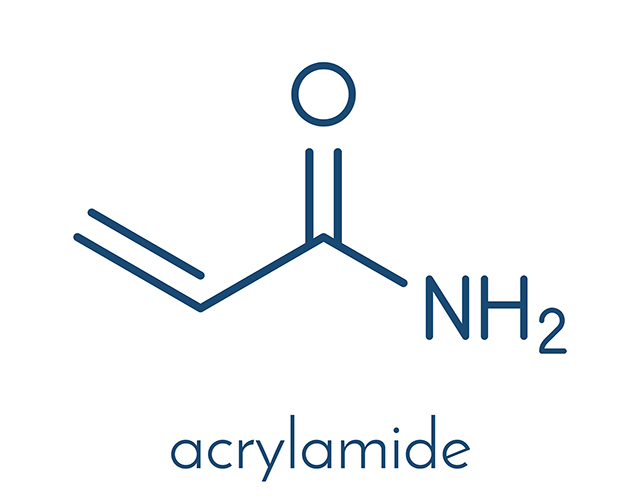Polyacrylamide — toxicity, side effects, diseases and environmental impacts
12/02/2017 / By Frances Bloomfield

Polyacrylamides are polymers formed from the sub-unites of acrylamides, which are chemicals created by cooking certain foods at high temperatures for long periods of time. These foods are usually starchy, carbohydrate-rich foods such as potatoes.
The most common applications for polyacrylamides are as suspending agents and thickeners in cosmetics and beauty products.
While polyacrylamides are in and of themselves non-toxic chemicals, what makes them dangerous is their potential ability to produce acrylamide.

List of known side effects
As was previously mentioned, polyacrylamides are notable because they risk breaking down into acrylamides. According to the National Toxicology Program, acrylamides have the potential to become carcinogenic. Animal studies have linked cancers of the thyroid, testes, uterus, mammary glands, oral cavity, and pituitary gland to acrylamides. Among humans, acrylamide exposure has been connected with the pancreatic cancer of male workers in industries that handle the chemical.
In addition to being harbingers of cancer, acrylamides are considered reproductive and developmental toxins. In particular, they’ve been observed negatively impacting the ejaculation of male rats and affecting the motility of male rat sperm.
Acrylamides are dermal and respiratory tract irritants.
Children are vulnerable to the detrimental health effects of polyacrylamides. For one, acrylamides have been detected in breast milk and can cross the placenta. For another, neurodevelopmental deficiencies have been observed in the infants of animals exposed to acrylamides.
Polyacrylamides, acrylamides in particular, aren’t known to bioconcentrate in aquatic organisms. However, they’re believed to be highly mobile in aquatic and terrestrial environments.
Body systems affected by polyacrylamides
As per the Agency for Toxic Substances and Disease Registry, polyacrylamides, specifically acrylamides, are toxic to the nervous and reproductive systems.
In addition, polyacrylamides can be harmful to the skin and respiratory system if touched or inhaled.
Items that can contain polyacrylamides
The following products are known to usually contain polyacrylamides:
- Anti-aging products
- Color cosmetics
- Facial moisturizers
- Hair products
- Lotions
- Sunscreens
Note that the European Union (E.U.) has mandated a limit for the amount of acrylamides in polyacrylamide-containing products. Such a regulation is not known to exist in the United States.
How to avoid polyacrylamides
Avoiding polyacrylamides is much easier in countries under the E.U. due to the fact that there’s a limit to just how much polyacrylamides are allowed in beauty products and cosmetics. Those in other countries can prevent polyacrylamide exposure by checking the labels of products for these substances. Polyacrylamides will usually be written as is, or as any of the other names mentioned below:
- Acrylate
- Polyacrylate
- Polyquaternium
Where to learn more
- Nobody wants or needs GM potatoes, so why is Big Biotech intent on pushing it?
- Toxic fracking chemicals persist in the environment, polluting food and water while damaging public health
- Chemicals.news
- Poison.news
- Toxins.news
Summary
Because they can break down into acrylamides, polyacrylamides are thought to be potentially carcinogenic.
Polyacrylamides can be toxic to the reproductive and nervous systems, and irritate the skin and the respiratory system.
Polyacrylamides can be transmitted through breast milk and cross placenta, making it important for pregnant and breastfeeding women to avoid polyacrylamide-containing products.
Sources include:
ATSDR.CDC.gov
TruthInAging.com
SafeCosmetics.net
ENHS.UMN.edu
Tagged Under: Polyacrylamide




















